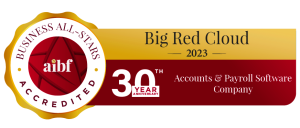At the beginning of your business startup, you are focused on one simple thing: survival. You’ve read about all the statistics about how many businesses fail during the first year. Yet you want to beat those odds. You’ve planned out every step of the process by hiring the right number of employees, getting an accountant to handle the bookkeeping software, and offering superior products and services to your customer.
Yet your business still has a long route to travel toward success. It can only take one lean year to impact your cash flow. You want to get to the point where you have more money coming in as revenue and less money leaving your business as operating expenses. A business safety net provides a viable option to help you have the liquid assets you need for operations to continue forward even when sales have tapered off for an unforeseen period of time.
Your business safety net should consist of a cash reserve that allows you to make the necessary business changes during the lean times. Here are 3 key factors to consider when creating a safety net.
1. Understand how much your business needs for a cash reserve
Your business may need more or less of a cash reserve compared to other companies based on your operational obligations and the volatility of your chosen market. Typically, you should review your accounting software and note the amount of expenses you pay to maintain normal production processes. Then you want to have at least a 3-to-4 month cash reserve to offer a safety net for operations if your small business is in a stable market environment. If you have more volatile market, aim for about 6 months or more of a cash reserve.
2. Keep track of your invoicing
You have to really sit down with your accountant and evaluate bookkeeping records to understand buyers’ paying tactics. Make note of who always pays on time and who the slow payers are as you need to see how their invoicing habits affect your operations and the ability to pay your business costs. Then you can change your invoicing methods to help bring in the funds when you require them during different cash flow circumstances.
3. Tackle business overspend
An important factor that affects the amount of cash reserves you collect is how much you overspend on operations. A small business that is just starting out will often place all revenue back into the company quickly to garner more clients and build up operations. While you don’t want to have too much capital lying around doing nothing, you also don’t want to be caught off-guard by having nothing available.
You need to find the right balance of investing in your current operations and saving cash for emergency situations. Eliminate business overspend by only investing in those areas that will offer immediate benefits to your operations and hold off on other areas that can be improved upon after building the safety net.
Building a business safety net is a smart strategy that every small business should consider. Factor it into your business plan and implement it during your operations when you are experiencing a boon in your profits.




